Late May 2018 (21st-31st)
/A sharp decline in both diversity of species and counts of individual birds occurred after the spring’s major coastal migration movement on 11 May. As a result, late May provided a bit of a burn-out effect for most birders in Virginia Beach as the realization that the season had reached its peak and the sheer volume of birds arriving to the city quickly tapered off. Additionally, high temperatures and unstable weather helped to define this reporting period, and the overall number of eBird checklists was down a bit from that of recent periods (despite the Memorial Day holiday weekend which can often bring many vacationing birders to Virginia Beach). However, as we’ve all become accustomed to, there is always something interesting to find in the city, and top records for late May in Virginia Beach included new rarity reports for ROSEATE SPOONBILL, BARN OWL, DICKCISSEL, BLACK-NECKED STILT & WARBLING VIREO and continuing rarity reports for at least two separate COMMON GALLINULES! Once mid-May passed, expected spring arrivals became non-existent since each of these species had already been logged, paving the way for late lingerers to take their place in the spotlight. With that in mind, during late May we saw records for TUNDRA SWAN, BUFFLEHEAD, WHITE-WINGED SCOTER, BONAPARTE’S GULL, BLUE-WINGED TEAL, PEREGRINE FALCON, BALTIMORE ORIOLE, RED-BREASTED MERGANSER, RED-THROATED LOON & LEAST SANDPIPER that eclipsed the departure dates for each species in an average year!
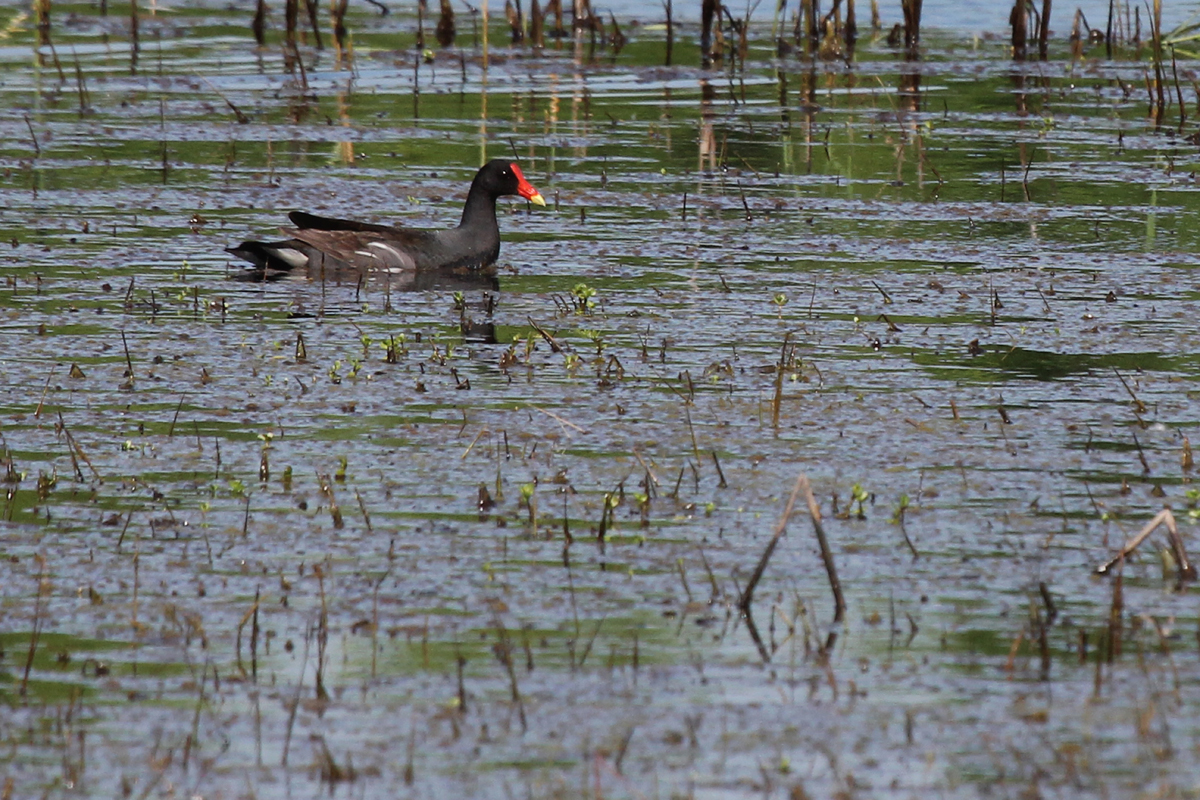
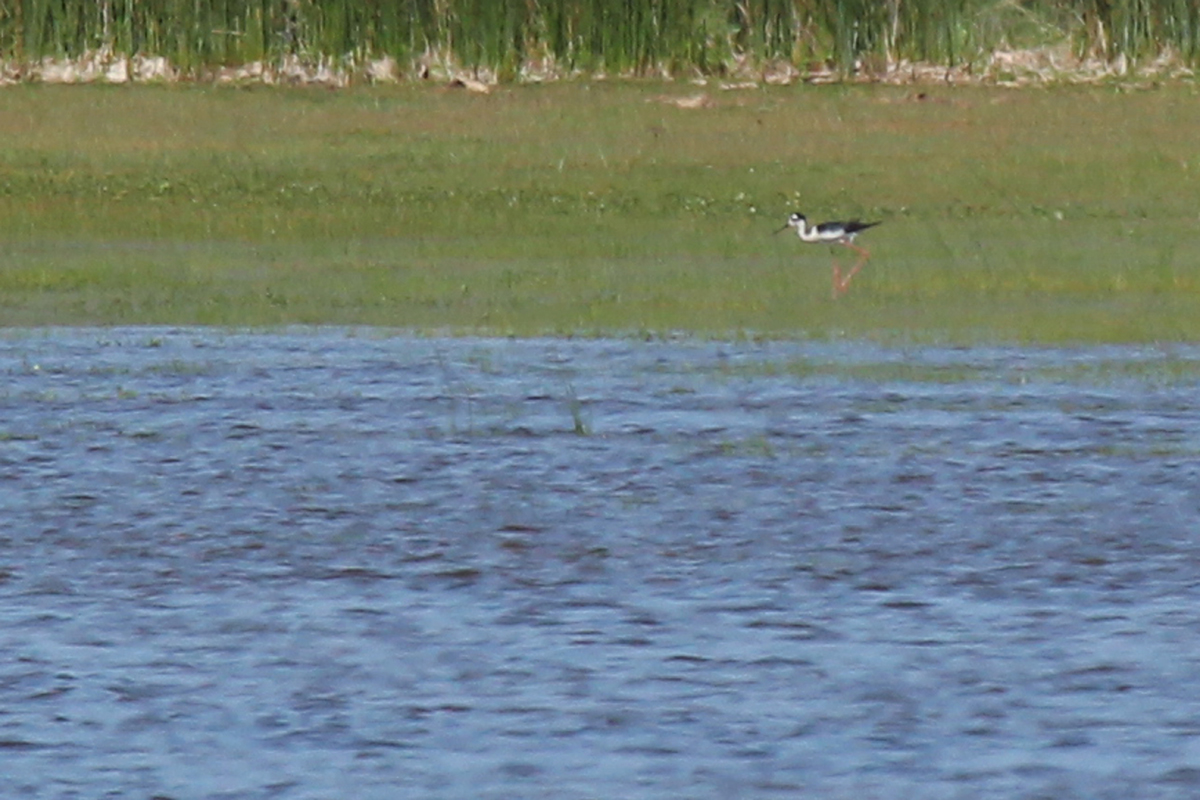


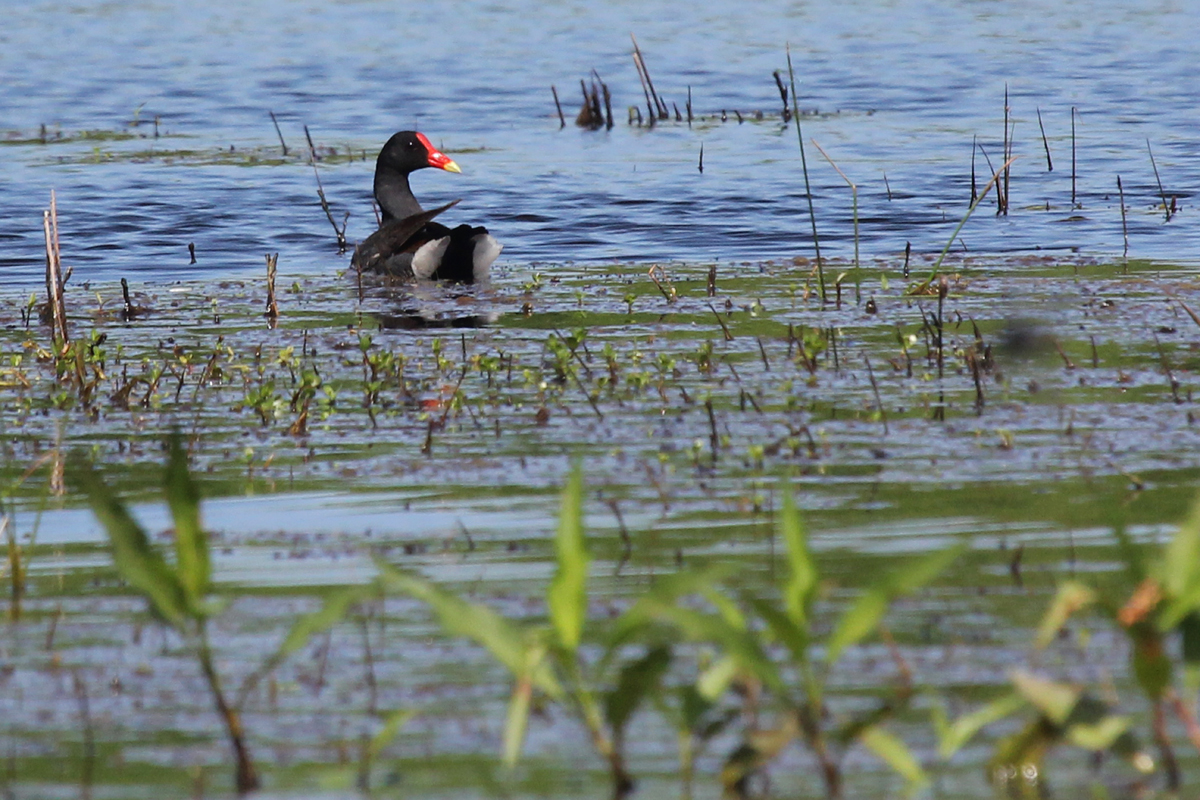
Topping the list this reporting period, and also representing the rarest bird observed so far in 2018 in Virginia Beach, a ROSEATE SPOONBILL was observed flying north over the Dune Trail at Back Bay NWR on 31 May (ph. Charlie Bruggemann)! At present, it appears that the identity of the massive pink bird was also independently arrived at by a park biologist who spotted the (likely) same individual on the C Pool prior to its flight over the Dune Trail. For a species that until last year had been documented only once in Virginia Beach altogether (one at Back Bay NWR on 12 Jun 1996), it is incredible that this 2018 bird now makes for a third recorded individual at Back Bay NWR, which now has hosted more Roseate Spoonbills than any other location in the state of Virginia! In 2017 (during what will be remembered as a major irruption of the species northeast of their normal range) a pair of spoonbills was observed at Pleasure House Point NA (obs. Eric & James Marcum) on 25 Aug, and the ensuing chaos caused by a sudden, torrential rain storm, allowed for a few locals to see the birds before they quickly departed the area (once the storm had subsided). Not long afterwards, a third individual for the year was noted at none other than, Back Bay NWR, from 3-5 Sep (ph. Timothy Burnett). The 2017 irruption also brought records to Shirley Plantation in Charles City, Chippokes Plantation in Surry, Hog Island WMA in Surry, Plum Tree Island NWR in Poquoson, Chincoteague NWR in Accomack and even to the Kiptopeke SP Hawkwatch site in Northampton. Perhaps 2018 will yield more than just this one sighting, but if not, it just makes it all the more incredible!
Every bit as unusual as the Spoonbill within the borders of Virginia Beach, a first-ever-eBird record for BARN OWL was submitted for 31 May at Pleasure House Point NA (ph. Warren Rofe)! This is the first new species to be added to the city's eBird listing since the Least Flycatcher of fall 2017 at Back Bay NWR. Barn Owl is a species almost exclusively associated with, you guessed it, barns. So, having a record in the northern, developed portion of the city is nothing short of incredible. Many of the areas birders have long-thought there may be individuals present in the more rural, southern, portion of the city, but with any available space on private property surveys for the birds are several lacking. The question of whether the bird was displaced, or whether it has been there for some time is also lingering among us unanswered, and subsequent checks have not yielded the owl unfortunately.
Another first for 2018, DICKCISSEL was found at Little Island Park on 23 May (obs. Tom Beatty). This is only the 6th individual to be recorded in Virginia Beach according to eBird reports and additionally, it represents our very first spring record! Past records in the city include an individual at Back Bay NWR on 20 Aug 2011 (obs. Robert Ake), a late winter record at Princess Anne WMA’s Whitehurst Tract on 14 Feb 2016 (ph. Andrew Baldelli & Tracy Tate), a pair of fall migrants at Little Island Park’s kayak launch side on 12 Oct 2016 (obs. James Marcum and ph. Mike Collins), and a possible breeder at Camp Pendleton SMR on 13-14 Jul 2017 (obs. Karen & Tom Beatty). The 2018 individual did not stick around long, and unfortunately no other reports from Little Island showed the bird later in the day. This species has been popping up at a number of locations scattered across Virginia over the last week (with a few even in the coastal plain), so any appropriate habitat around the city needs to be checked. Prime locations for this species would be cut over fields that have several years of shrub growth and dense vegetation beneath; Whitehurst & Beasley Tracts comes to mind, or several fields scattered around southern Virginia Beach.
Yet another first for the year, a BLACK-NECKED STILT was found during the thrice-monthly impoundment survey at Back Bay NWR on 25 May (obs. Robert Ake). Initially found on the ditch south of the C Storage Pool, this individual was observed later in the afternoon at the eastern fringes of the C Storage Pool (ph. Rob Bielawski) and then on the C Pool the following day (ph. Steve Myers), so it appeared to be slowly moving north across the park. Since that time though, no other reports of the bird have come in, and it is likely that it moved out of the area (despite this being potential breeding habitat). April and May tend to be the months where this species shows up here, typically as transient birds are making their way north, and while reports in the city occur annually, we typically only see 1-2 different individuals each spring with most reports at Back Bay NWR. Last year, we were a bit spoiled by having potentially 4 individuals recorded in the city between 26 Apr & 13 May, with one at Back Bay NWR, two in a rainfall-induced puddle along Muddy Creek Rd., and one found in a marsh at Marina Shores.

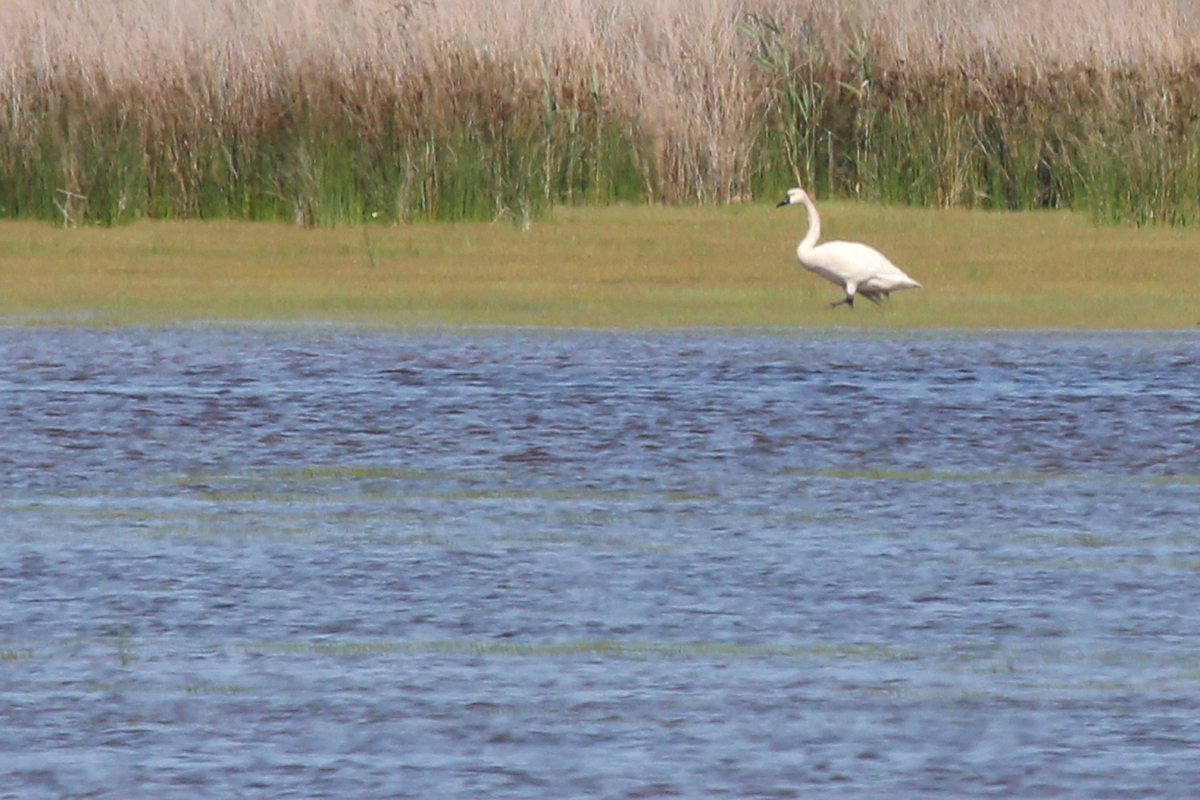
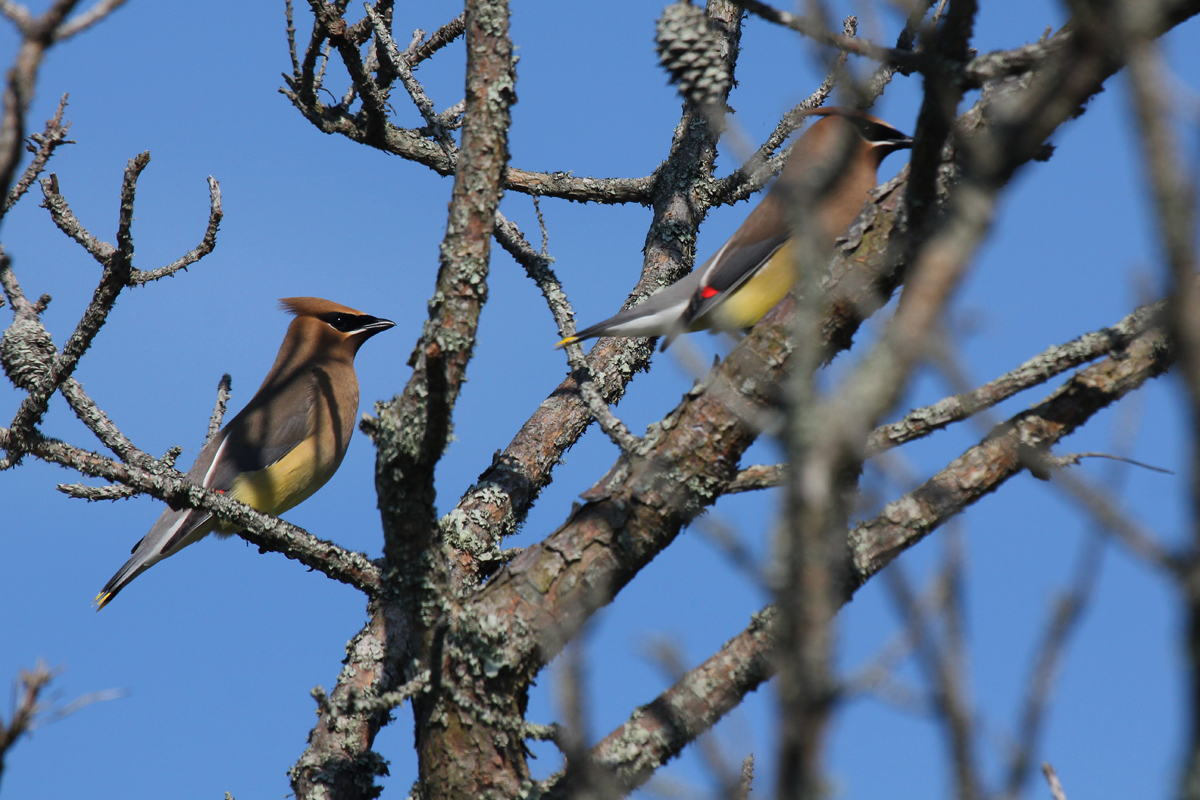
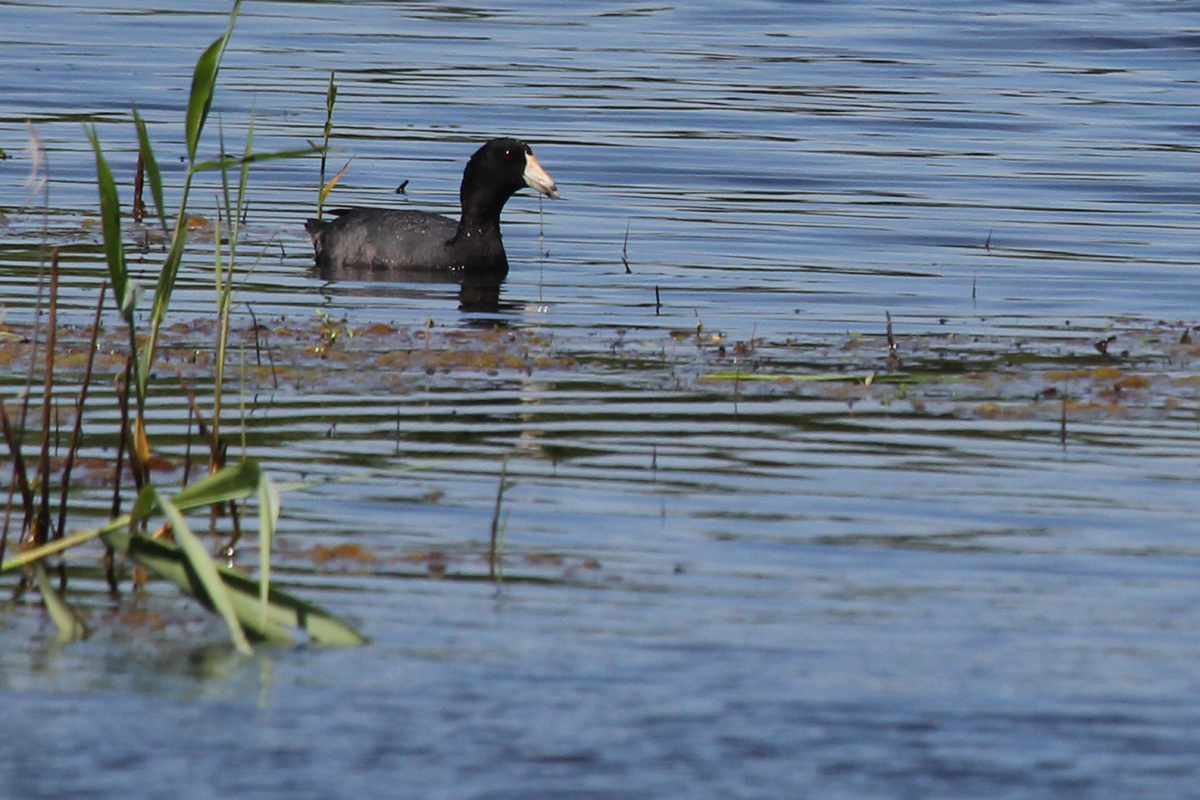
Last, but certainly not least, an unexpectedly rare, and very late WARBLING VIREO was found in the small portion of Knott’s Island that sits inside Virginia Beach’s border (rather than Currituck County, NC) on 27 May (obs. Andrew Baldelli & Tracy Tate). A second individual for the spring season here in Virginia Beach, this makes 2018 the first year where we’ve had more than one Warbling Vireo logged in the city according to eBird! Singles have been noted in 1996, 2012, 2016 and 2017, with the vast majority of years providing no records for this species which is found typically far west of us in higher elevations of the state. This also exceeds the latest known spring date for a transient of this species passing through Virginia Beach, with the previous date of 17 May 1996 at Back Bay NWR eclipsed by a healthy 10 days. No other reports came in for the current bird though, as this area of the city isn’t one that many birders venture too. Geographically, it probably gets some overshooting birds in spring that hang around for a day or two before either crossing Back Bay or heading back inland. It suffers from a lack of public land however, and any observations must occur from the public road that runs north-south for a relatively short distance.
We had a pair of continuing rarities during late May, both of which were COMMON GALLINULES. The first, and more recently discovered, is that of a single individual found at the west end of the Raptor Trail at Back Bay NWR on 14 May (obs. Cindy Hamilton). This individual appears to have persisted at this exact location (give or take 50 feet for most reports) through at least 24 May (ph. Kathy Louthan). Another Common Gallinule, likely one of a pair of birds encountered earlier this spring nearby, was photographed at Princess Anne WMA’s Whitehurst Tract on 27 May (ph. Rob Bielawski). This individual was observed in close proximity with an American Coot on the third impoundment south of Munden Road. What makes both of the sightings interesting, is that so far in the state of Virginia as a whole, there has only been one record of a Common Gallinule that was outside of Virginia Beach. So, with at least three individuals logged here this spring, and the potential for more through the summer if any of these decide to breed locally, it has been an excellent year for the species in the city.
While we’ve finally reached the tail end of the spring season, which means we had no new arrivals to report (at least for expected species), we did have quite a few species linger past their average spring departure dates. Most notable among the group, a single TUNDRA SWAN continues to be observed on the C Storage Pool at Back Bay NWR (observed by many but last reported 31 May, obs. Tommy Maloney & Jason Schatti), and it has become increasingly clear that this must be an injured individual, now about 6-7 weeks beyond this species’ typical date of departure from the city. Very late as well, by roughly a month behind the average departure date of 30 Apr, a female BUFFLEHEAD found on the beach at First Landing SP on 30 May (obs. June McDaniels) almost certainly represents another injured individual. An astonishing 26 days late, a WHITE-WINGED SCOTER was photographed about a quarter mile off the Oceanfront beach on 26 May (ph. Justin Fuller). It will be interesting to see if this individual lingers, as summer scoter records are usually dominated by Black Scoters, with Surf Scoters next in line. Records for White-winged Scoters in Jun are nearly absent from this part of the coast. A BONAPARTE’S GULL photographed on the mudflats at Pleasure House Point NA on 18 May (ph. Rob Bielawski) appears to have continued at this location through 22 May (obs. Robert Ake & Edward Brinkley, and later by Andrew Baldelli). Perhaps this same individual was reported on the beach nearby at First Landing SP on 30 May (ph. June McDaniels) & again on 31 May (obs. June McDaniels), a remarkable 21 days beyond the average departure date of 10 May. At 14 days beyond the average departure date, a male BLUE-WINGED TEAL observed on the impoundments at Back Bay NWR on 24 May (obs. Andrew Baldelli) represents an interesting record, given that the latest report prior to this one occurred way back on 5 May!
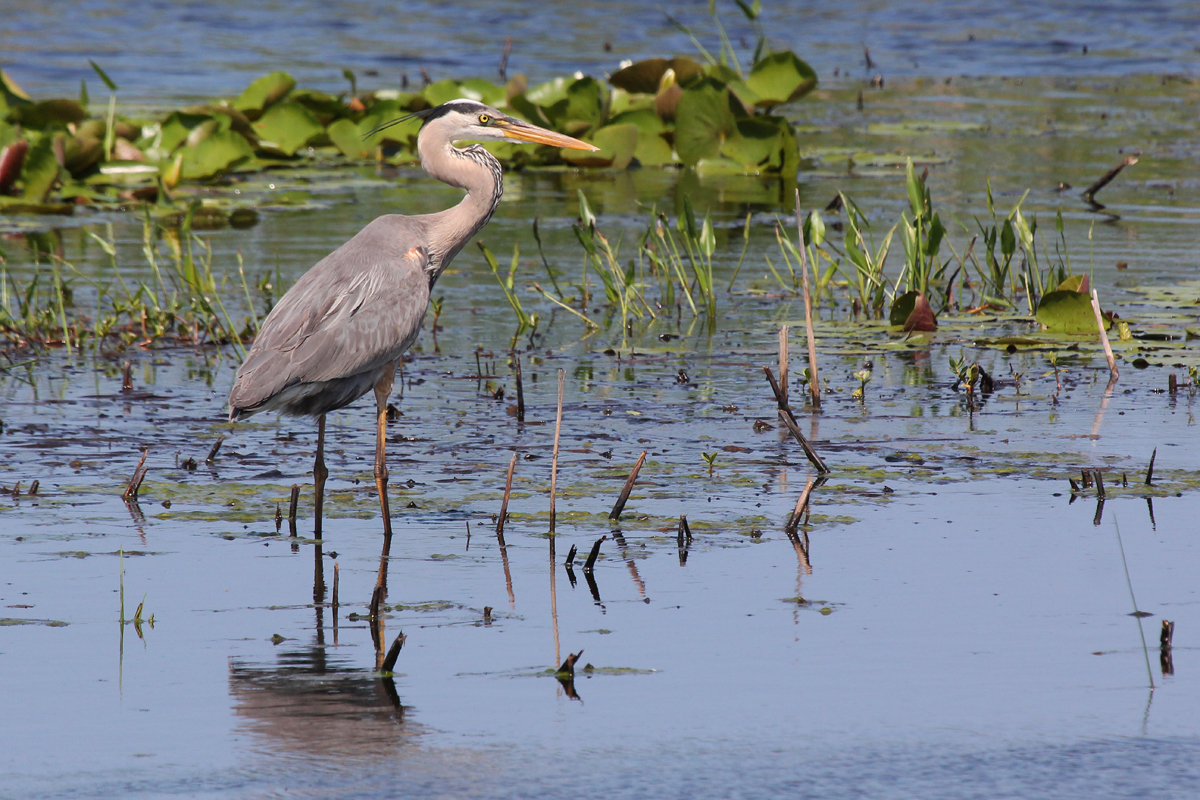
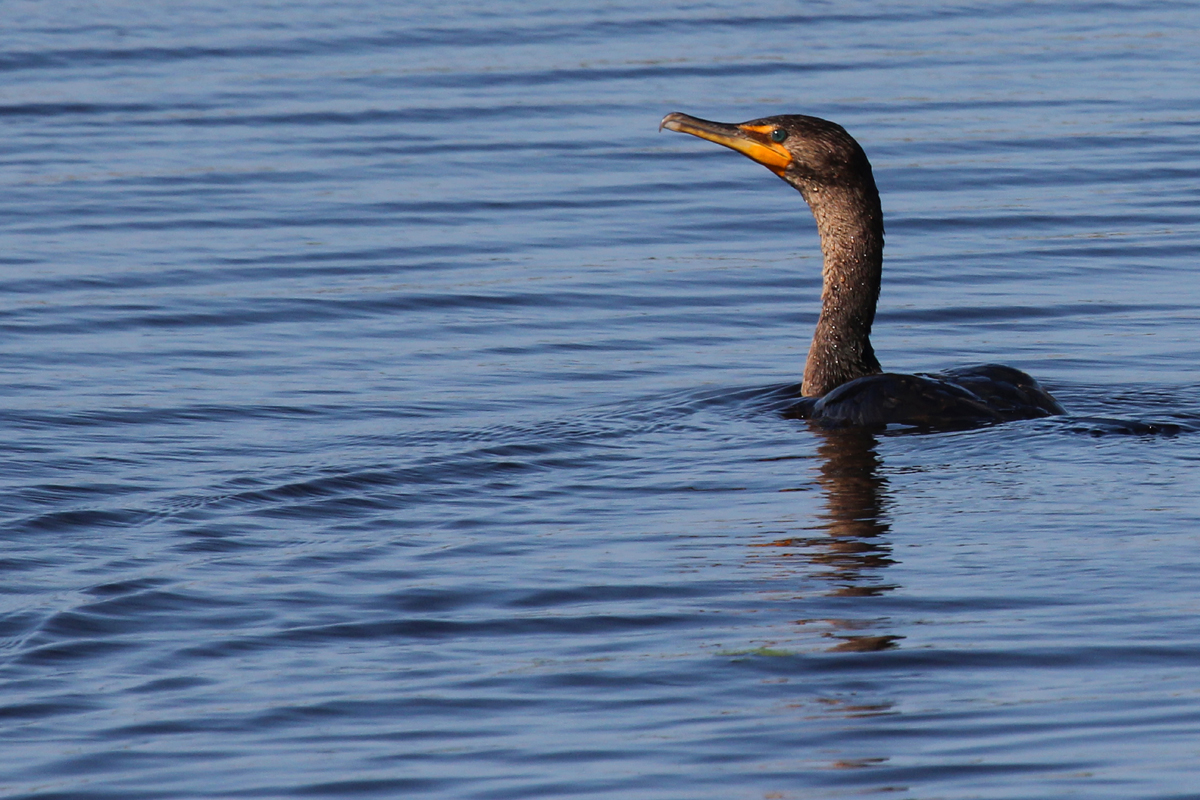
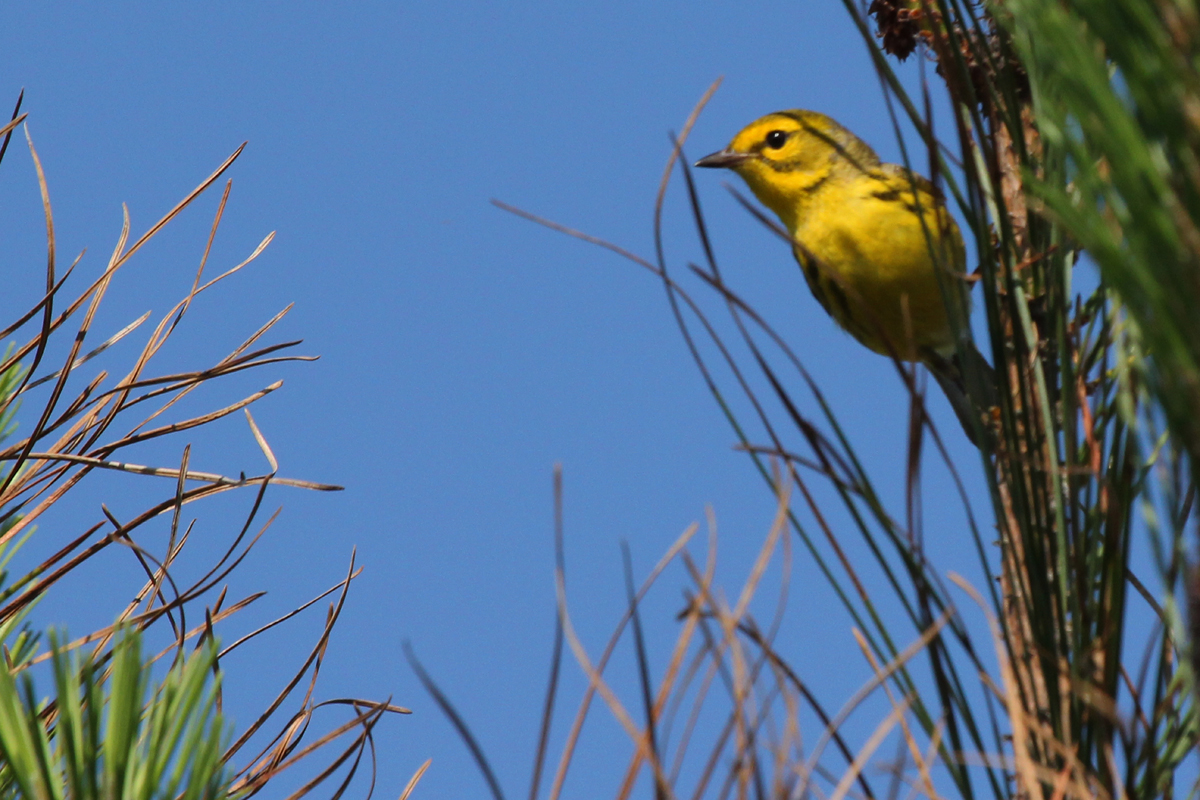
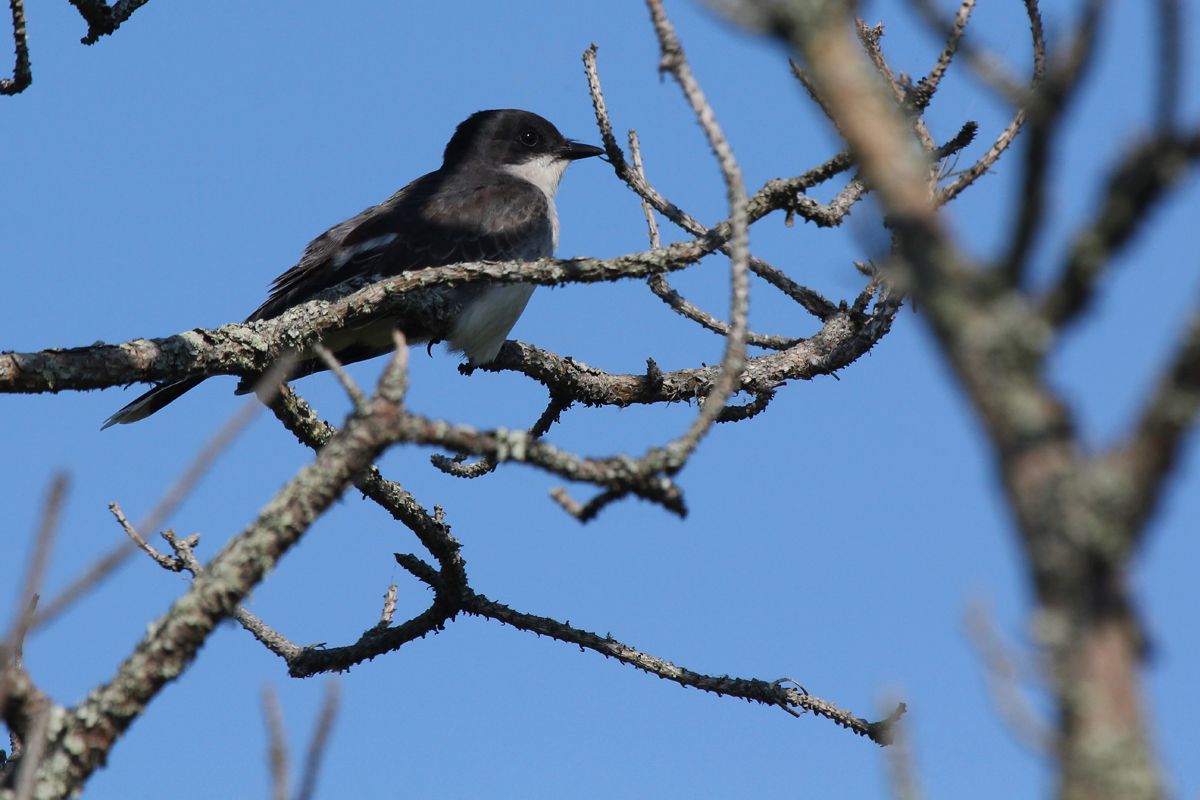
A singing male BALTIMORE ORIOLE on Knott’s Island’s Virginia Beach portion found 27 May (obs. Andrew Baldelli & Tracy Tate) and likely the same individual observed 31 May (obs. James Marcum) exceeded this species usual departure date by 11 days. At seven days beyond average, a PEREGRINE FALCON in Thoroughgood on 22 May (obs. Tracy Tate) was a great late May record. Three late RED-BREASTED MERGANSERS were noted, with an adult female at Rudee Inlet on 28 May (obs. Andrew Baldelli), with likely the same individual observed later in the day (obs. Logan Anderson) and a separate pair of females was found at First Landing SP on 30 May (ph. June McDaniels) and again on 31 May (obs. June McDaniels) the latest being six days beyond the expected 25 May departure date. At least two RED-THROATED LOONS persisted into late May (though only a maximum of two days beyond typical), with one individual in the central resort district on 21 May (obs. Corey Entriken) and a second individual photographed inside of Rudee Inlet on 22 May (ph. Robert Ake & Edward Brinkley). Lastly, a single LEAST SANDPIPER was photographed on the beach at Back Bay NWR on 31 May (ph. Charlie Bruggemann), just one day past the expected 30 May departure date, but late nonetheless!
One interesting report that garners mention here is that of a MISSISSIPPI KITE observed flying north over Back Bay NWR on 26 May (ph. Steve Myers). While this species does not flag as a rarity in eBird for Virginia Beach anymore, it was once very scarce. In recent years, a pair of birds was noted as breeding in the Thoroughgood section of the city, and since then, the population of returning kites has increased each year. However, most have already arrived to this northern portion of the city going back to the early part of May, so this report of a transient bird passing through Back Bay is especially interesting, and if we had sub-county data filters in eBird, this species would like flag as rare anywhere away from Kings Grant & Thoroughgood just due to the unlikelihood of catching one passing through. This is similar to how Clapper Rails don’t flag as rare, but anywhere away from saltmarshes in the city, they’re certainly unexpected. King Rails by association, are truly rare anywhere away from the freshwater of Back Bay and its tributaries. Great Cormorants away from the Chesapeake Bay Bridge-Tunnel are exceedingly rare as well, though they’re locally common at that site. Anyway, you get the point, the eBird data quality filters have had a great deal of thought put into them, but there are geographical issues that have not yet been overcome, yet!
With the next reporting period (early June) beginning the ‘ornithological summer’ season, it feels important to remind all birders in Virginia Beach that the 2nd Virginia Breeding Bird Atlas is now moving fully ahead into its third season of data collection. This five year project is aimed at mapping out the breeding ranges for every species of bird that nests within the state of Virginia. It is intended to provide a comparison with data from the 1st Virginia Breeding Bird Atlas, which took place in the 1980s, to identify species whose populations have deteriorated, and to use this knowledge to build plans on how these species-in-need might be better assisted by federal agencies and conservation organizations. Co-sponsored by the Virginia Department of Game & Inland Fishers, the Virginia Society of Ornithology and the Conservation Management Institute at Virginia Tech, this project relies heavily on volunteers for data input using eBird, so if you’re already an eBird user, this project is a great way to help make your checklists potentially count for more than just numbers on your personal life list, by helping document the shifting distributional patterns of species that can directly benefit from your observations! A large array of information regarding the project is available online, with the Atlas Website being a great starting point for anyone who might be interested, as well as the Atlas eBird Portal News Page. Additionally, I help run the Atlas’ Public Facebook Page (where information is shared to the broader community of those folks who have shown an interest in the project), as well as the Atlas’ Facebook Group (where active Atlasers can share their sightings and discuss various aspects of the project with one another).
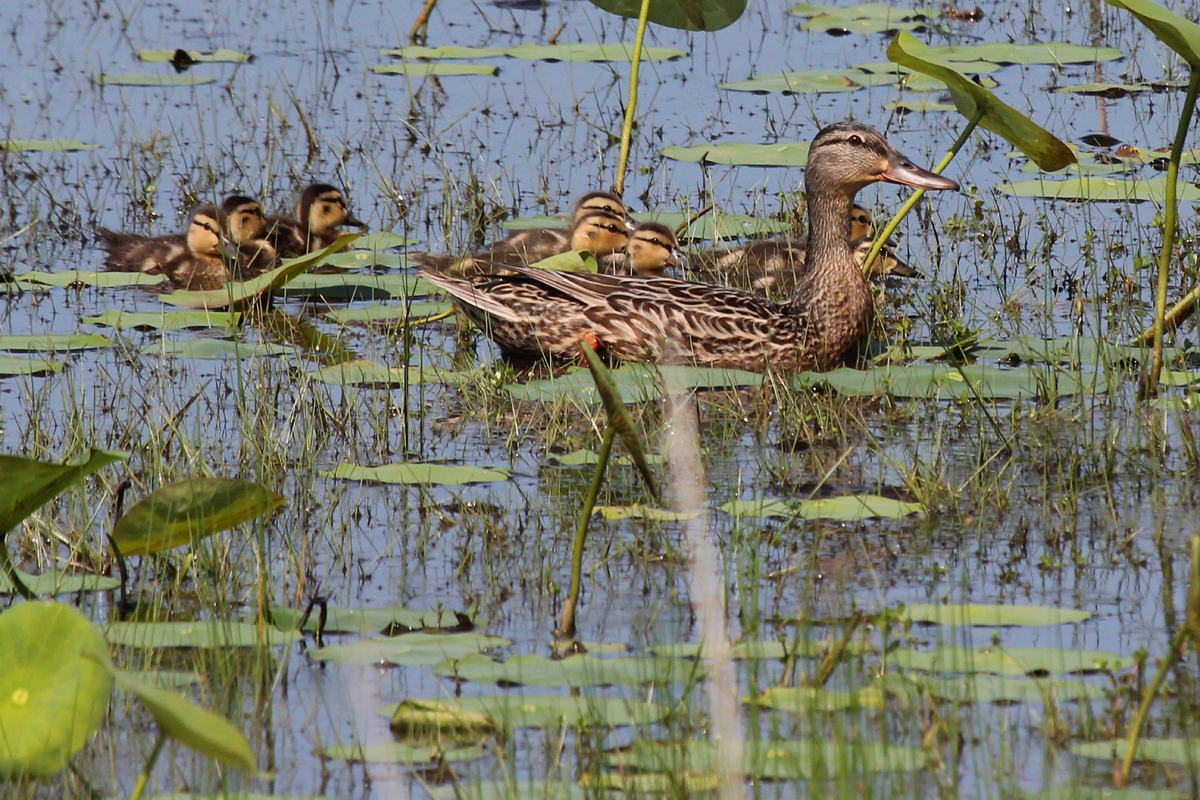



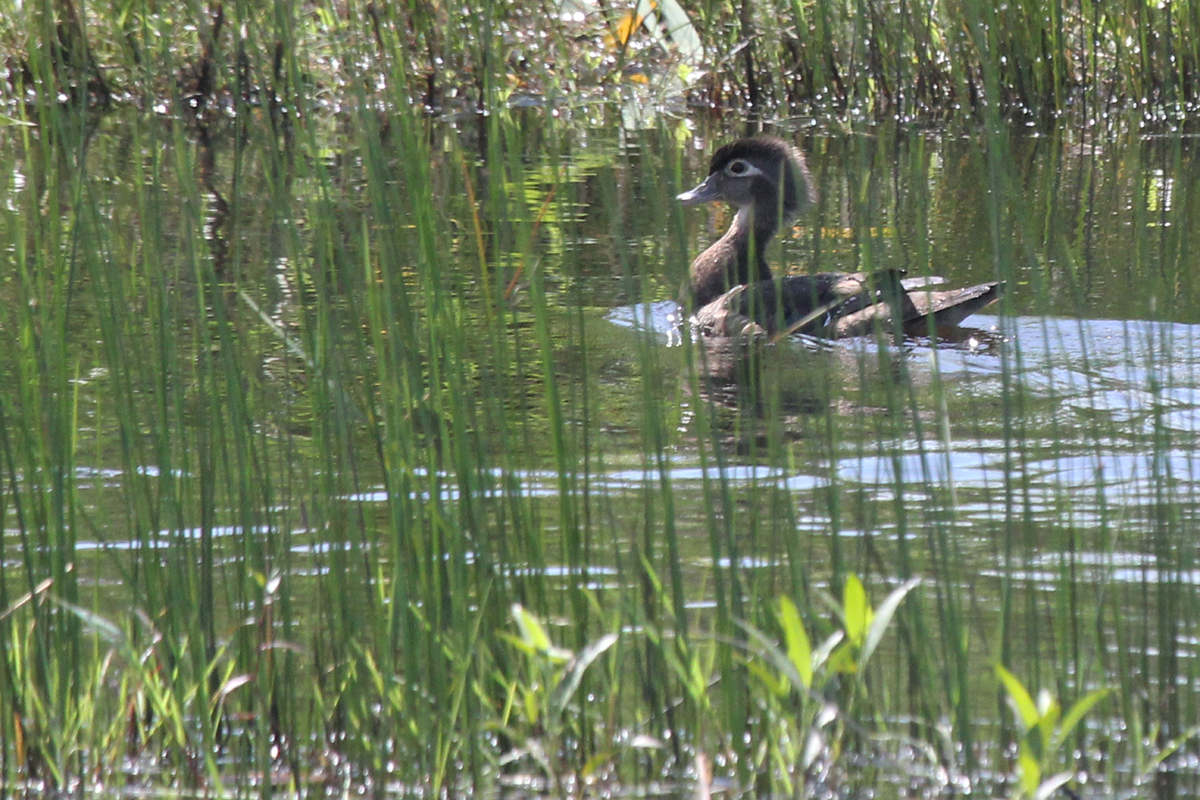
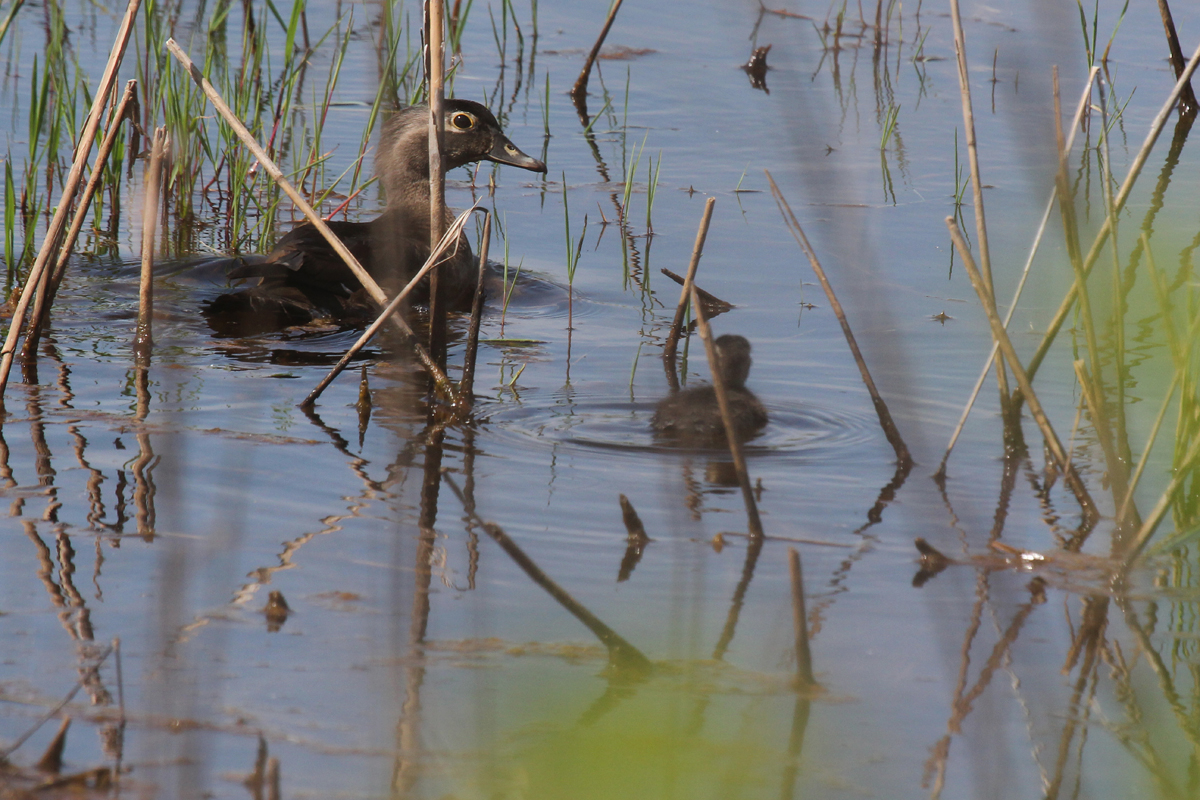
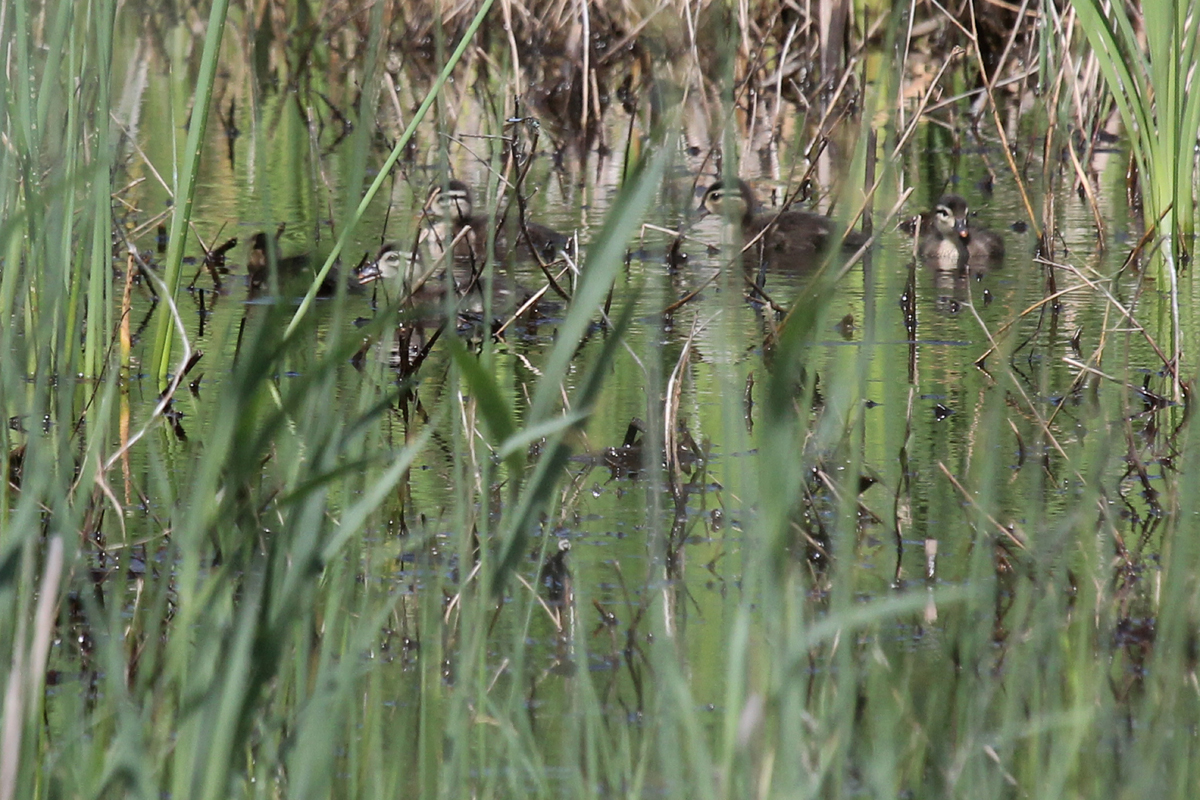
All that said, I wanted to point out some interesting observations that were submitted to the project via eBird during late May! On 23 May, right in a residential yard, a Tufted Titmouse fledgling was beautifully documented (ph. Mary Catherine Miguez), thereby confirming the species in this particular Atlas Block as a breeder. Later that same day, a Killdeer was observed tending to a nest with several eggs in it, and a Brown Thrasher was observed feeding a younger individual at Little Island Park (ph. Mary Catherine Miguez). A very difficult species to confirm in Virginia Beach, a nest of Green Herons was observed in central Virginia Beach on 25 May (ph. Pamela Monahan). Lastly, a pair of waterfowl confirmations came in this period when a female Mallard was observed with 8 fledglings in tow at Back Bay NWR on 25 May (ph. Rob Bielawski), and a female Wood Duck at Princess Anne WMA’s Whitehurst Tract was noted with a matching set of youngsters on 27 May (ph. Rob Bielawski). On each of these checklists, you’ll notice that a ‘breeding code’ has been assigned for the applicable entries, and this information is the life blood of the project. The idea is to confirm as many species as possible during the five year project, but there are many different codes ranging across three main groups: Possibles, probables, and confirmations. The only other difference from a normal eBird checklist is apparent at the top left corner of these checklists. Note that the logo does not simply show the standard eBird symbol of a bird in flight; instead it state Virginia Breeding Bird Atlas 2, and shows the Loggerhead Shrike symbol to the right of the text. In order to make any eBird checklist into an Atlas checklist, all one needs to do is navigate to the list, simply click the “Change Portal” button that appears on the bottom right panel, select Virginia Breeding Bird Atlas from the drop-down menu that pops up, and click the big green button that also says “Change Portal”. Add in some breeding codes for what was observed, and that’s it, nothing to it!
WEATHER: Late May 2018 turned out be the warmest comparable period since 2011 in Virginia Beach, and while the 90° high on 12 May still holds the top notch for 2018, this period as a whole was our warmest so far. Average daily high temperatures rose slightly from those in mid-May, 0.7° from 83.1° F to 83.8° (+3.7° from prior 10-year average), with average daily low temperatures barely dropping, 0.1° from 67.3° to 67.2° F (+4.2° from prior 10-year average). Overall, temperatures ranged from a minimum of 57° F (25 May) to a maximum of 89° (27 May). During the period, 2.21” of rain fell, spread across four days with measurement amounts, with a maximum of 1.65” falling on Monday, 28 May. Maximum sustained winds at Oceana this period were 18 mph (27 & 31 May) and gusts reached 26 mph (31 May). No noteworthy tidal surge events affected the Sewell’s Point tide gauge this period. Sunrise/sunsets varied from 5:52 AM/8:09 PM (21 May) to 5:46 AM/8:17 PM (31 May), which means we gained 14 minutes of daylight during this period with a total of 14 hours and 30 minutes of ‘Length of Day’ to close the period!
For those hoping to view every photograph submitted for Virginia Beach during this period, please see the complete listing for the month of May located on eBird’s Media explorer by clicking here! Please remember, anyone with an eBird account also has the ability to rate these photographs (1-5 stars), and based on the average rating, this is how eBird populates anything media-driven on the website, particularly the Illustrated Checklists! So, if you're one of the many folks who enjoy looking at photographs of birds, take some time to click them all and rate them, it helps make eBird better and better each day!
LOOKAHEAD: With late May completed, we have now bid farewell to Gray-cheeked Thrush, Swainson’s Thrush, Veery, Bobolink, Stilt Sandpiper, Surf Scoter, Red-breasted Merganser, Horned Grebe, Northern Gannet & Purple Sandpiper (25 May expected departure date) and Common Nighthawk, Worm-eating Warbler, Northern Waterthrush, Scarlet Tanager, American Redstart, Yellow Warbler, Hooded Warbler, Least Sandpiper, Pectoral Sandpiper, Lesser Yellowlegs, Yellow-throated Warbler, Pied-billed Grebe, American Coot & Dunlin (30 May). Any records for these species moving forward will flag in eBird as ‘rare’, though techinically they are flagging for being found past their usual date of departure. In early June, we have typical departure dates for Red Knot, Blackpoll Warbler, Gull-billed Tern, Spotted Sandpiper, Short-billed Dowitcher, Black-bellied Plover & Ruddy Turnstone (5 Jun) and White-rumped Sandpiper & Semipalmated Plover (10 May), which will wrap up our spring migration season! So, make sure to try for your last sightings of the season on these species while you can! If you observe any of these species near or after those dates, please try to document their occurrence to the best of your ability; it helps make eBird data & filters more accurate! From now through late June, we will not have any expected species arrivals, but from there moving forward, fall arrivals will be listed here each period (so stay tuned). As always, make sure to report your finds to eBird so the data can be used to adjust the average expected spring departure dates!
Next Entry | Entry Index | Previous Entry
For further information regarding this thrice-monthly, online publication, please visit the Journal Overview Page which provides an in-depth explanation of the format, layout and composition of the journal. As always, thank you for reading, and please leave me a comment below (you may use your Facebook, Gmail or other accounts to easily do so), or just click the Heart icon to the lower right of this post to let me know you stopped in!